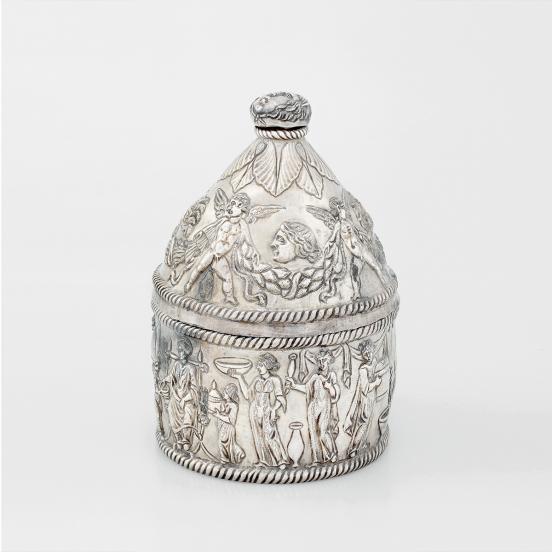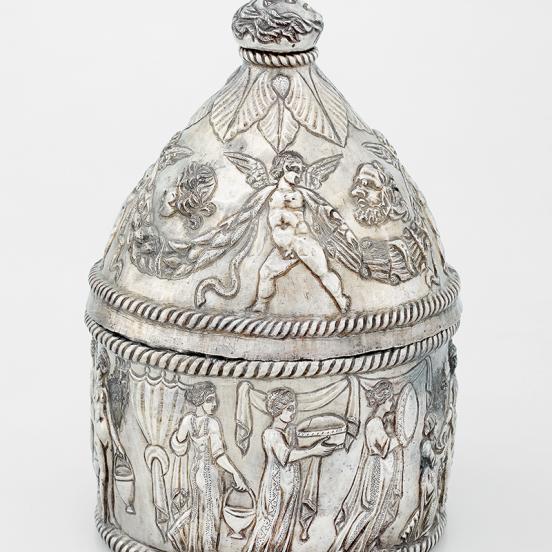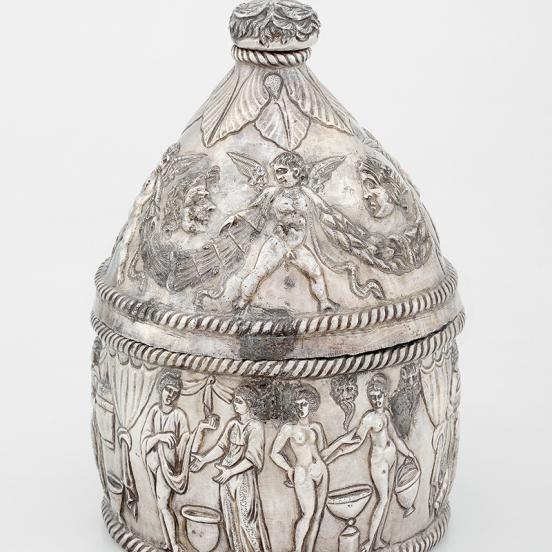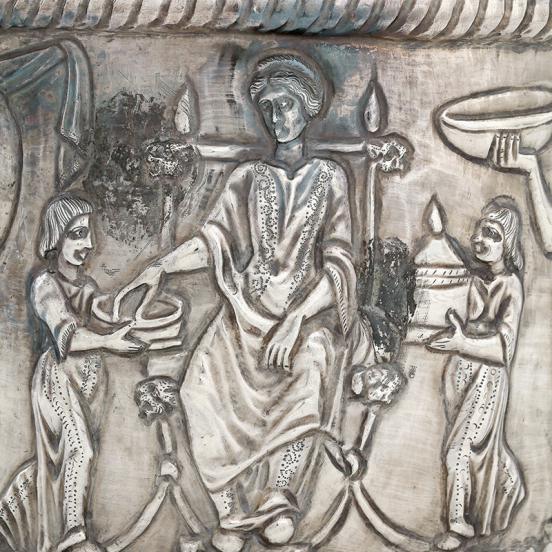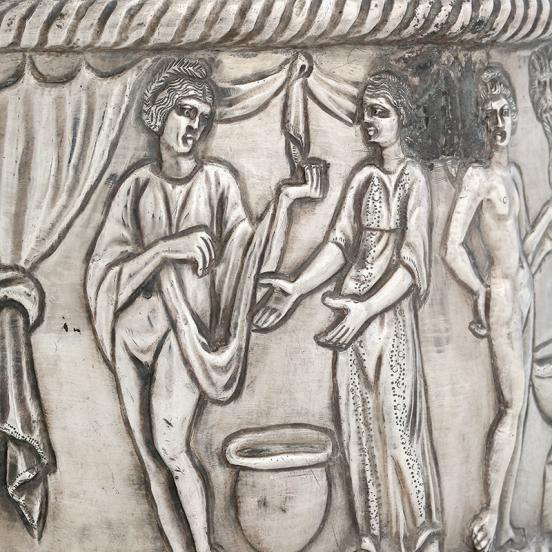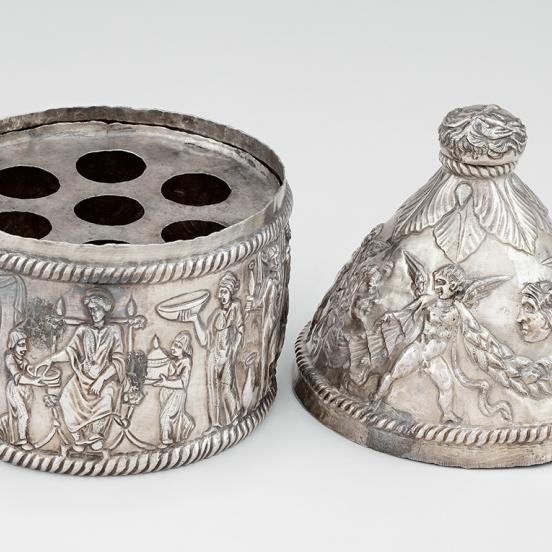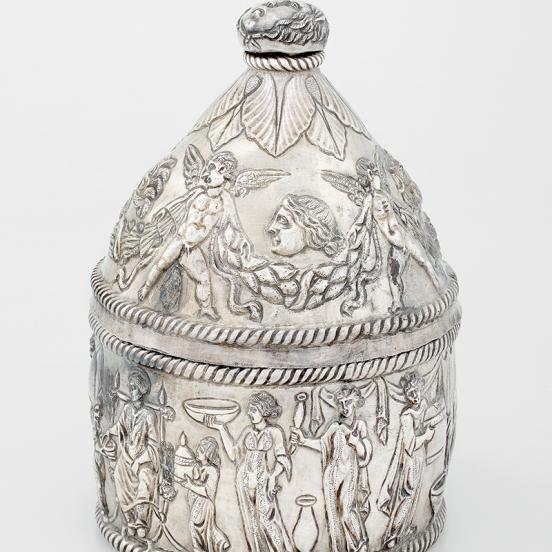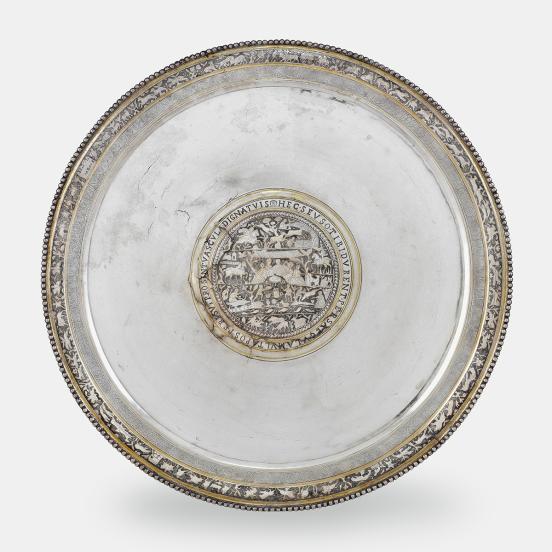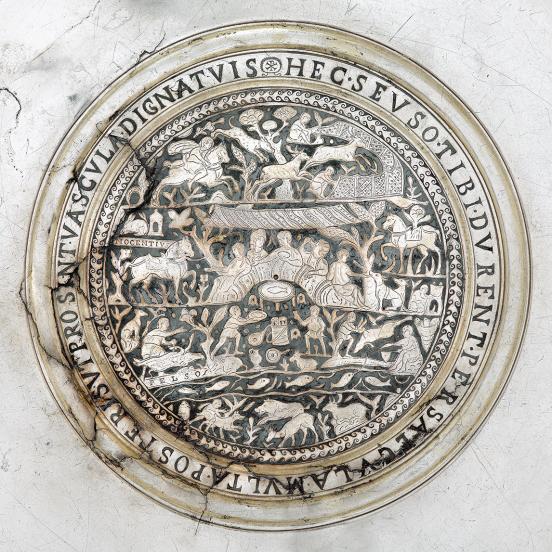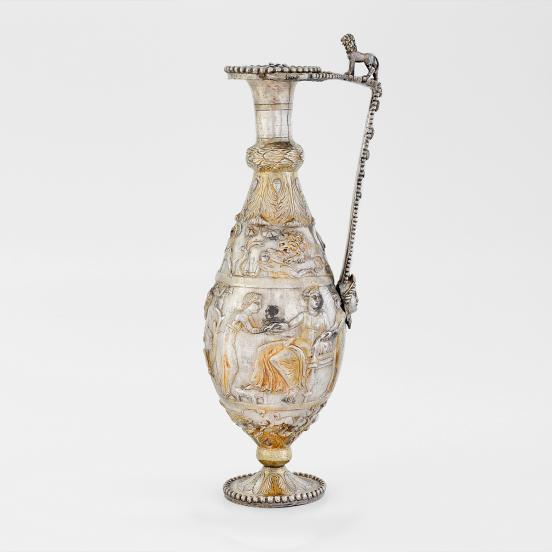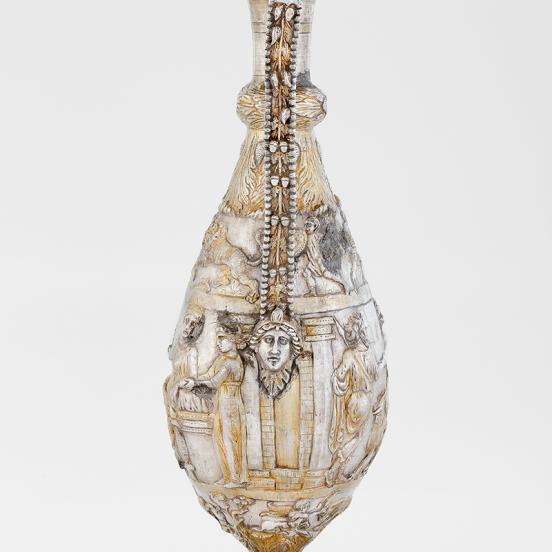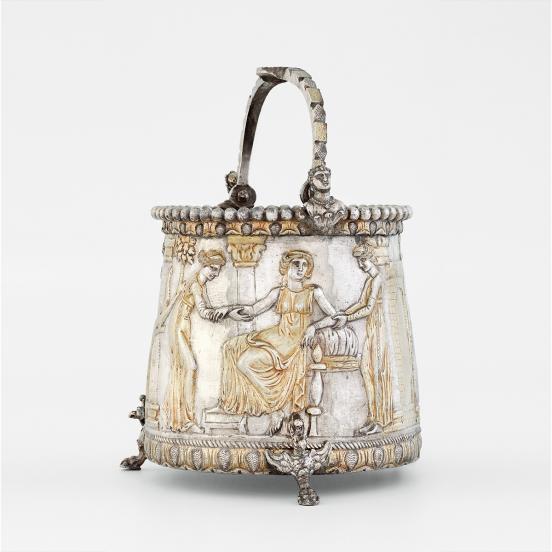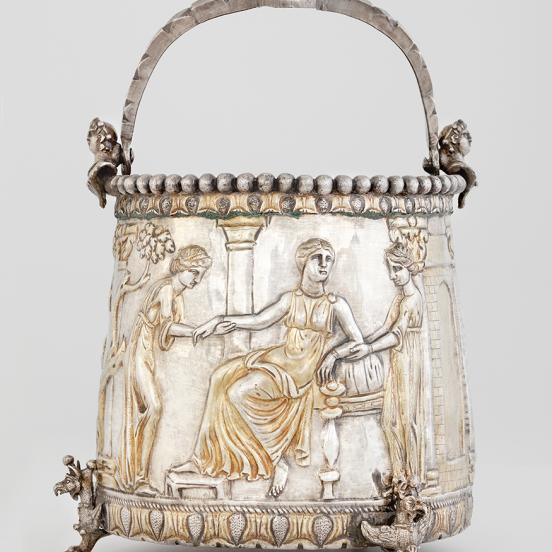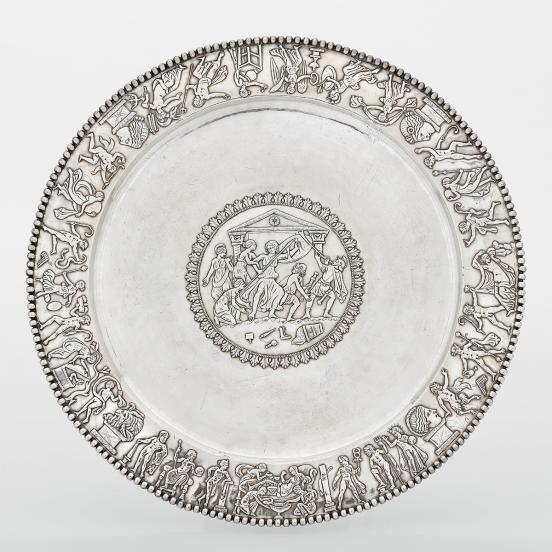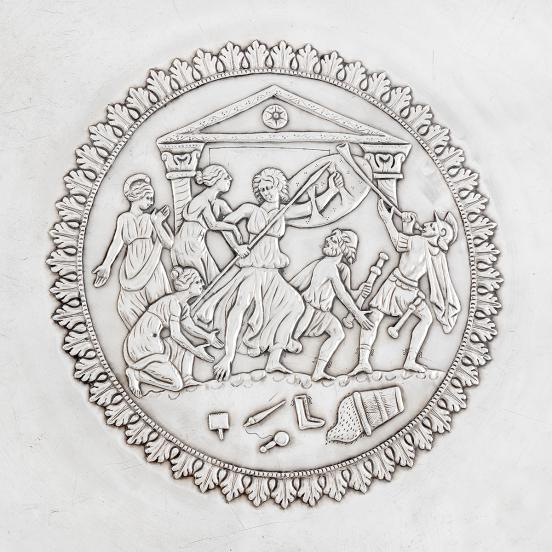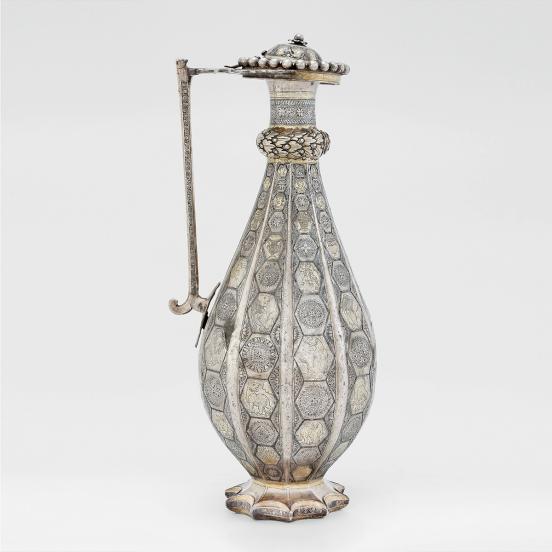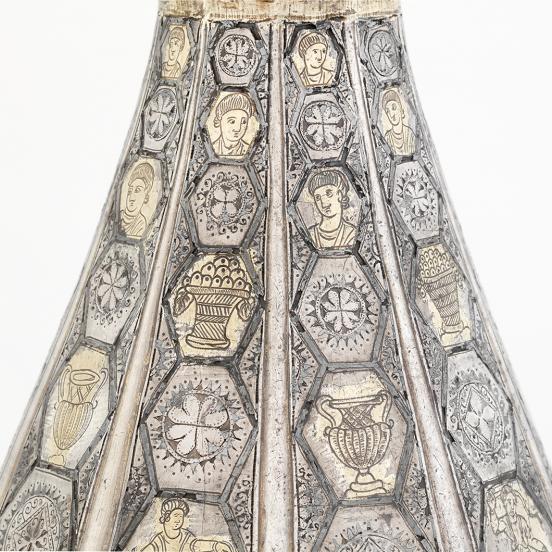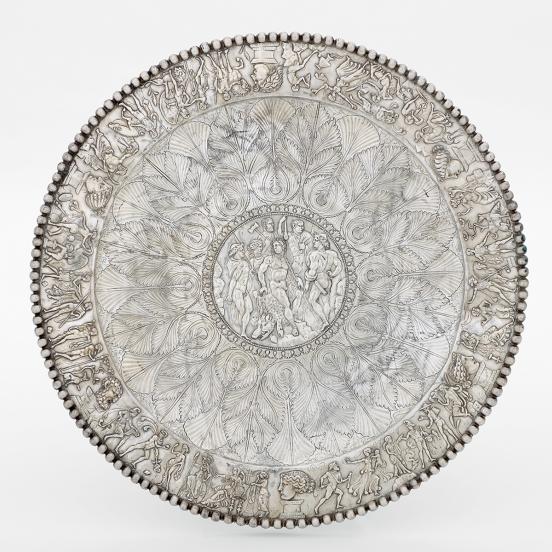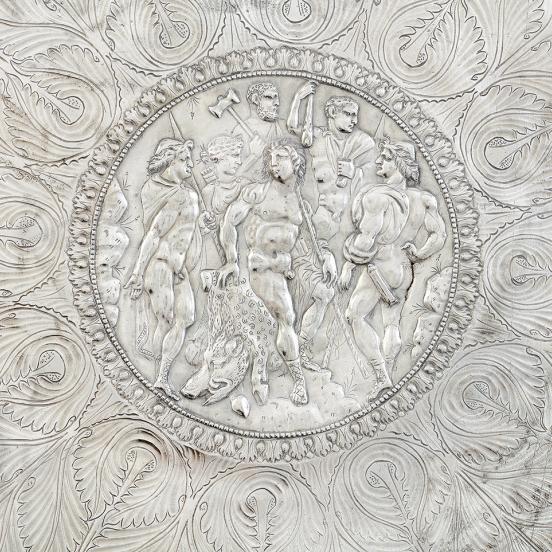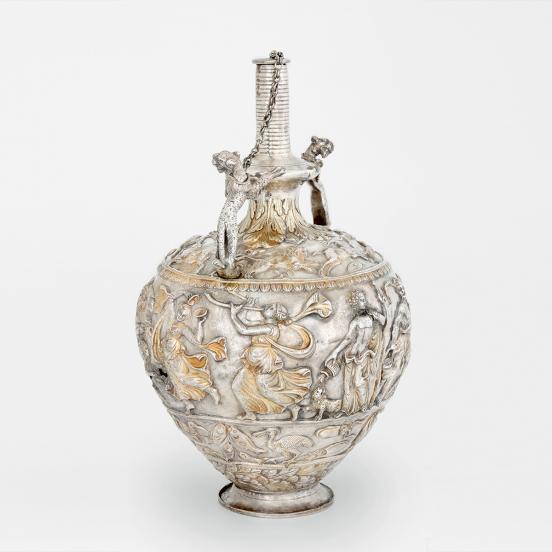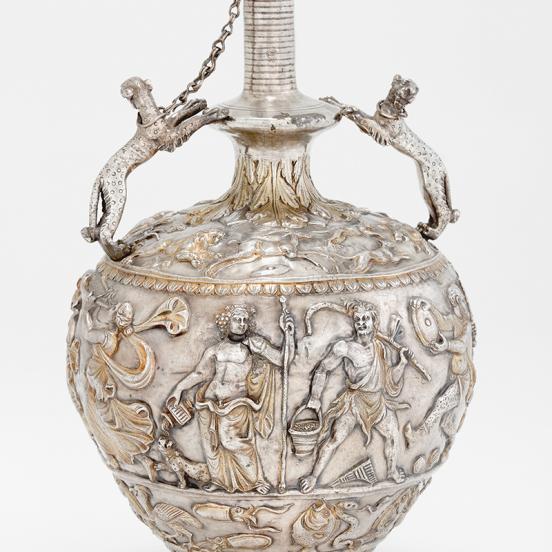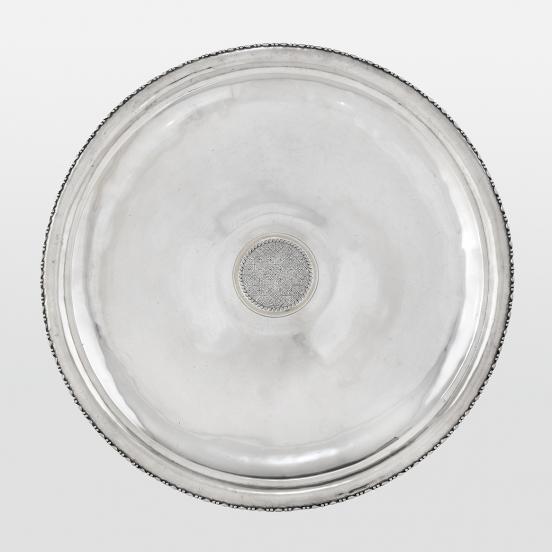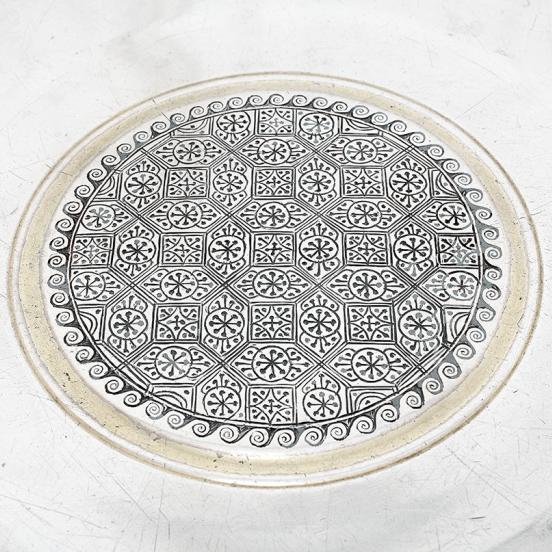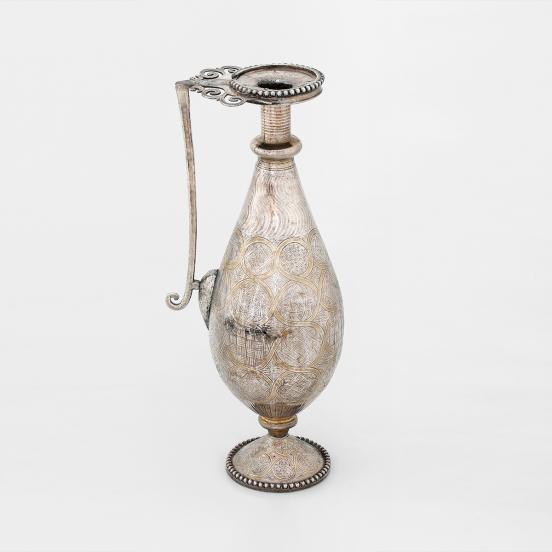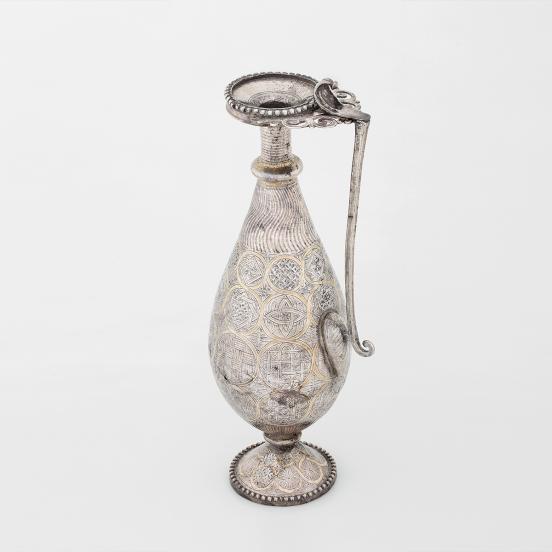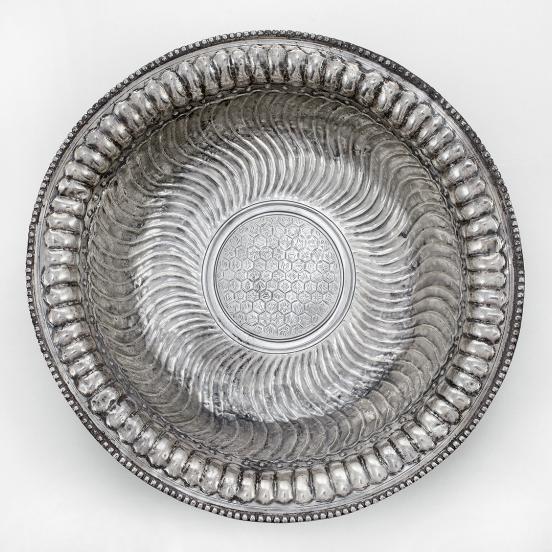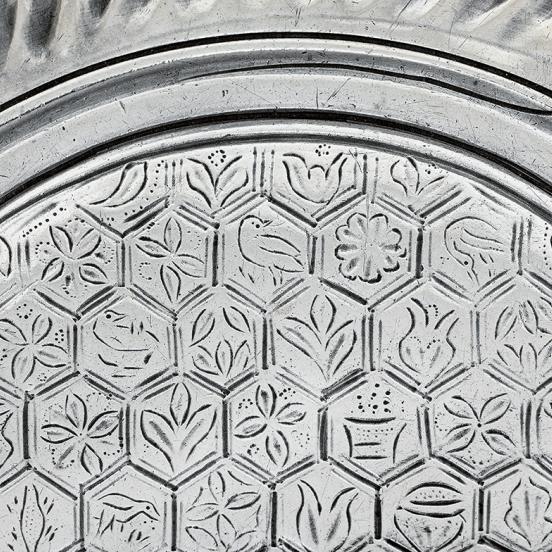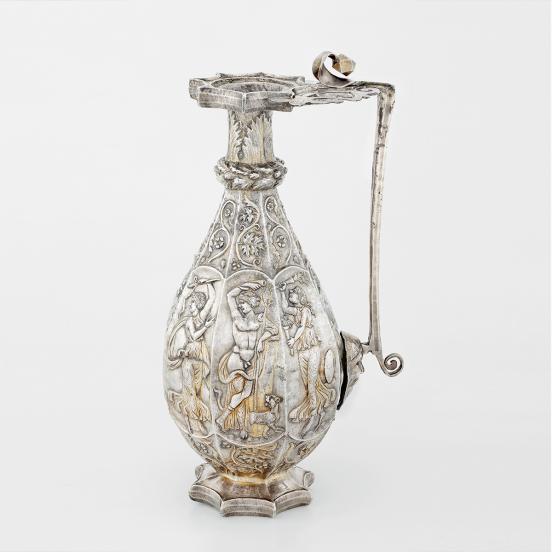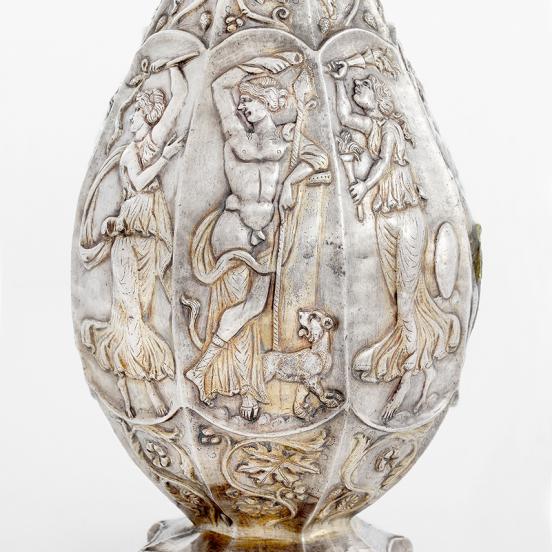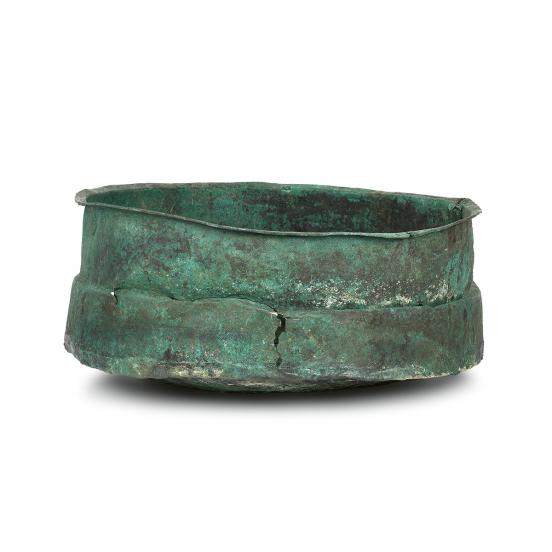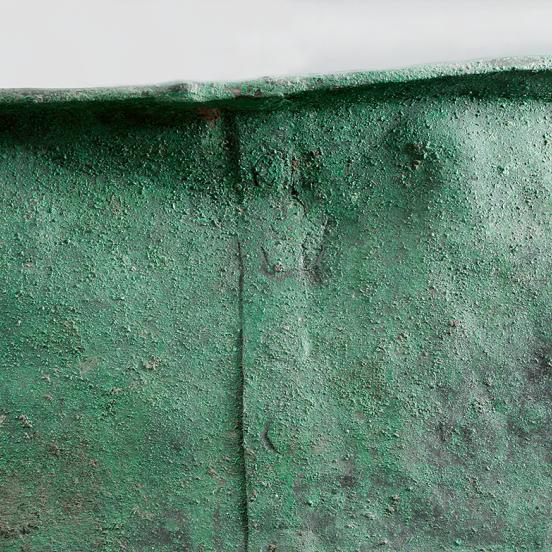The Perfume Casket
Judging by the representations on the cylindrical, lidded silver casket, as well as its former content, the lady of the family could have used it during her daily bathing and beautification. The figurative frieze around the body of the casket is divided into two scenes separated by a curtain. Both present an episode of evening or morning washing. The shorter, erotic one shows the intimate world of a contemporary private bath. Naked handmaids, who assist with bathing, are depicted gently arm in arm waiting for the lady. To the left of the scene she is undressing for the bath with the help of a handmaid. The already dressed lady is sitting in the focus of the longer scene and her handmaids are taking to her the varied accessories for her beauty treatment, a mirror, a jewellery box, a chest of clothes and an object entirely similar to the perfume casket. The composition was inspired by the well-known scenes of Aphrodite and the three Graces bathing, in which the lady was clearly endowed with the charm and beauty of the goddesses. The casket lid is embossed with figures of Eros carrying garlands and masks, while the knob of the lid is a Gorgon’s head having protective power and amuletic function. The bathers unprotected in their nakedness were especially exposed to a curse owing to envy and hatred, as well as to the power of evil eye and malevolence. The decorative motifs of their bathing sets, which were to avert trouble, partly guaranteed protection against magical practices.
The interior of the casket has a plate with seven circular perforations, where silver pots containing perfume, make-up and ointment used to be kept.

